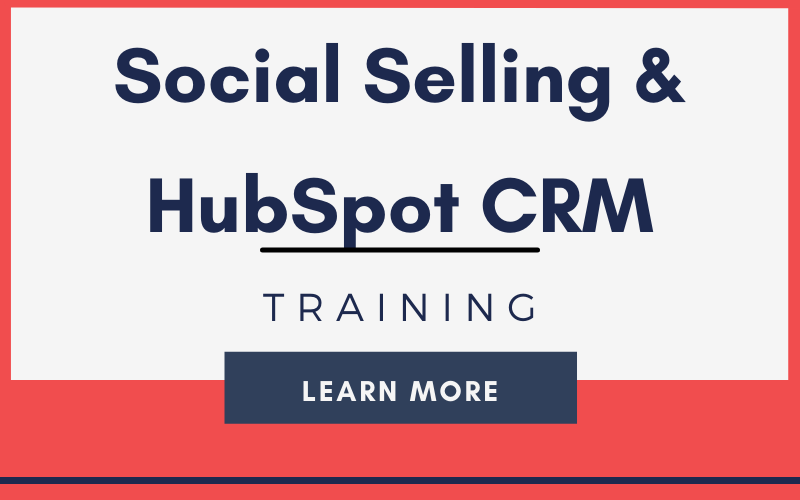What is Social Selling And Why Does it Matter?


Social media has become an integral part of many people’s lives. It doesn’t matter if you are a teenager or a senior, the majority of people are using social media in some way. The younger generation has grown up with social media, making it a natural part of their lives. Others have jumped into social media because they found that it’s a great way to keep up with family and friends.
But the more people are enjoying social media for personal use, the more they are also using it to help make buying decisions. You’ve probably done it yourself; reached out to friends and family to get a referral for a particular product or service.
Or, you researched information on a product or service to see what others are saying about it.
There was a time in the early days of social media when many thought that it was just a fad or something that only teenagers would ever care about. You may even remember some social media networks that have failed such as Google+, Vine, Friendster, and others.
The Power of Social Media

Today, however, we understand how important and prevalent social media is with LinkedIn, Facebook, Twitter, YouTube, Instagram, Pinterest, Snapchat, and several others that are dominating people’s time spent online.
Granted, there have been some changes made by the titans of technology. Google shut down Google+ due to significant data breaches and the low number of users. Facebook continues to struggle with federal regulators, recovering from being hacked, and is now in the process of changing its business model and its name.
So, while there have been failures and changes underway, consider this:
- LinkedIn has 562 million professional members. (LinkedIn, 2018)
- When it comes to delivering content and securing audience engagement, LinkedIn is the most effective social media platform (LinkedIn, 2017)
- 79 percent of people online use Facebook (Pew Research Center 2016)
- 76 percent of adults use Facebook daily (Sprout Social 2016)
- Instagram hit 1 billion monthly users in June 2018, after hitting 800 million monthly users in September. (TechCrunch, 2018)
- 80 percent of millennial Pinterest users say the platform helps them decide what they should buy. (CoSchedule Blog 2018)
- Snapchat has 188 million daily active users. (Statista, 2018)
- There are 369 million monthly active Twitter users. (Statista 2018)
- Social media and video viewing are the two most popular online activities. (Smart Insights, 2018)
These are incredible statistics that cannot be ignored!
The big question is, are these social media platforms good for attracting buyers to your business?
I would answer that with a resounding yes.
And that is what we call Social Selling.
But, before we get into what social selling is, let’s review what social selling is not.
What Social Selling Is Not
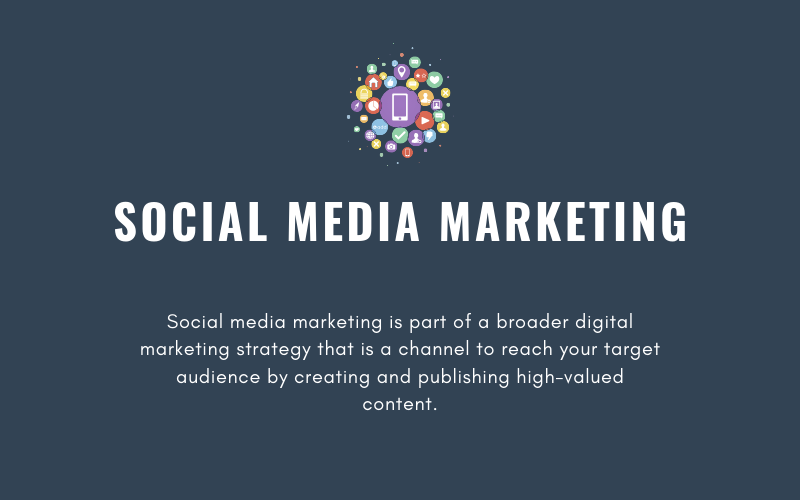
I remember getting into a debate in a LinkedIn Group about the difference between digital marketing strategy and social media marketing.
The so-called “social media marketing expert” claimed that digital marketing and social media marketing are the same thing and that there is no difference between digital marketing and social media marketing.
These terms are often used interchangeably, and it can be confusing to determine what is what.
So, let’s be clear.
Social Selling is not:
- Social media marketing. Social media marketing is part of a broader digital marketing strategy that is a channel to reach your target audience by creating and publishing high-valued content.
- Digital selling. Digital selling leverages all the digital sales assets in an organization to drive buyer engagement including social selling, sales automation, CRM, online presentations, digital documents, sales sequencing, email templates, video presentations, etc.
What Social Selling Is
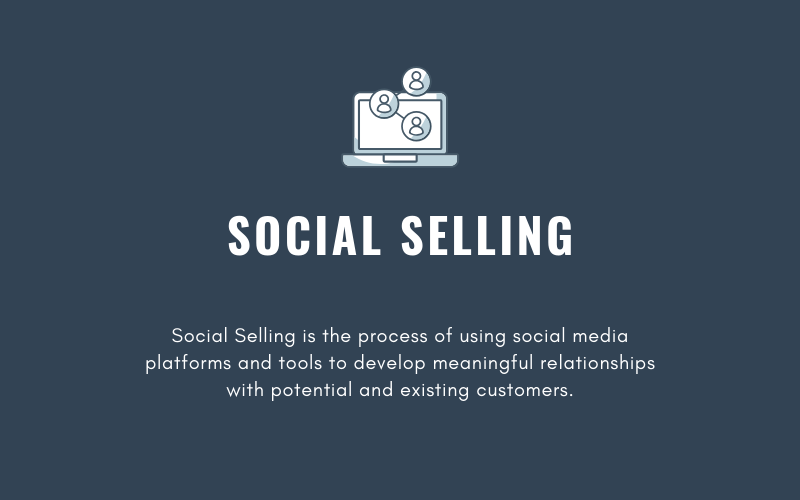
Social Selling is the process of using social media platforms and tools to develop meaningful relationships with potential and existing customers.
Social Selling is shifting how business is getting done.
Social Selling is about:
- Leveraging or building relationships with prospects on social networks
- Helping to solve problems for prospects with high-value content
- Providing insightful content that will motivate your prospects to connect with you
- Engaging with prospects during their buyers’ journey
It is not like email blasting, which is a one-to-many approach. Instead, it is a one-to-one relationship-building approach and is becoming a very effective channel for business-to-business (B2B) companies.
If you are a B2B professional salesperson, you likely know that LinkedIn is the dominant social media network for B2B sales.
Let’s compare traditional selling methods to social selling.
Comparing Traditional Selling vs. Social Selling
Traditional Selling
- Transactional-based
- Immediately pitching and trying to close
- Cold calling
- Email list purchasing and blasting
- Uncertainty in results
Social Selling
- Relationship-based
- More listening and educating by addressing prospects’ problems and how you add value to solving their problems
- Less phone and face-to-face communication and more online communication
- More use of social networks
- Better and more accurate measurement
Consider the following realities:
- 90 percent of customer-buying decisions start online. (Forrester)
- 90 percent of decision-makers never answer a cold call. (LinkedIn Global Survey of 1,500 B2B Decision Makers and Influencers)
- 75 percent of B2B buyers now use social media to research vendors. (IDC)
With caller ID and call screening for senior-level buyers, a cold call is not going to get through to a senior-level executive. Your buyers are also very mobile and not always at their desks.
You Must Keep Up with New Buyer Behavior
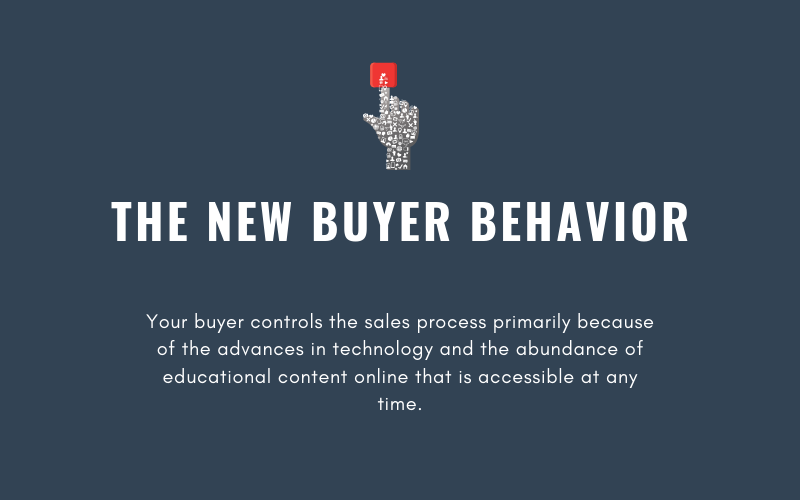
Keep in mind that buyer behavior has changed. As we’ve mentioned in past articles, you no longer control the sales process. Your buyer controls the sales process primarily because of the advances in technology and the abundance of educational content online that is accessible at any time.
Professional digital marketers are providing most of the educational content needed online for senior-level buyers. This content enables buyers to research and educate themselves to determine who they will call or reach out to for the product or service they need.
Therefore, content marketing is at the core of social selling.
But the bar is continually being raised on what is deemed as “quality” content.
The ugly truth is senior-level buyers can be on any of your top four (4) competitors’ websites within a matter of seconds. They will not talk to a salesperson in the early part of their buyer’s journey.
That’s why the content you published online must be educational and of great value in order to attract and interest senior-level buyers.
Buyers Use Social Media Before Talking to A Company
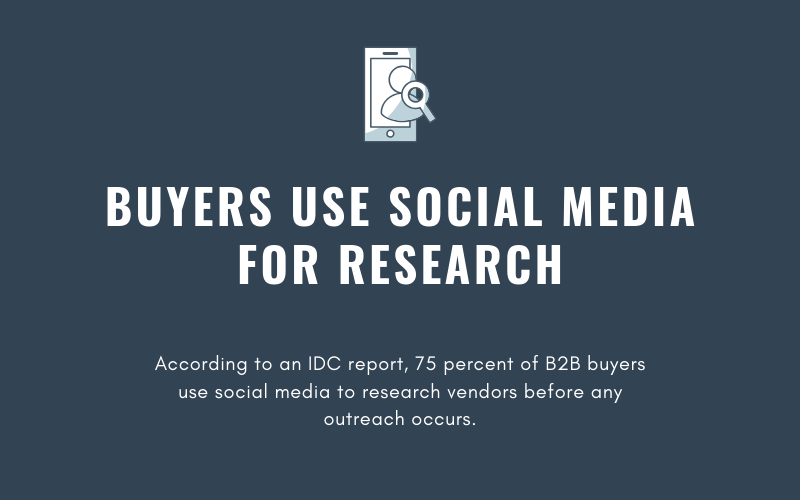
Buyers are increasingly influenced online through reviews, ratings, and industry influencers.
According to an IDC report, 75 percent of B2B buyers use social media to research vendors before any outreach occurs.
A B2B Buyers’ Survey revealed that buyers are using three (3) social tools to conduct their research:
- Blogs
- Video websites
There are several ways that buyers research and utilize the networks they know and trust as part of their buying process.
During their online research buyers will evaluate and determine the following:
- The companies that are considered market leaders since they are publishing the most insightful content related to the buyers’ problems, needs, and challenges
- The products that are the best fit to help the buyer achieve his or her goals
- Case studies or examples of return on investment (ROI) for different products or services
- Companies that offer a simplified buying process
- Ease of use and implementation for a product or service
- Features and capabilities of a product or service
- Scalability of the company providing the product or service
As a result, buyers are now much further down the sales cycle, or buyer’s journey, before they reach out to contact a salesperson.
According to HubSpot, 58 percent of buyers want to discuss pricing on the first call. That’s because these buyers have covered a lot of ground before they ever reach out to you.
Social Selling Success
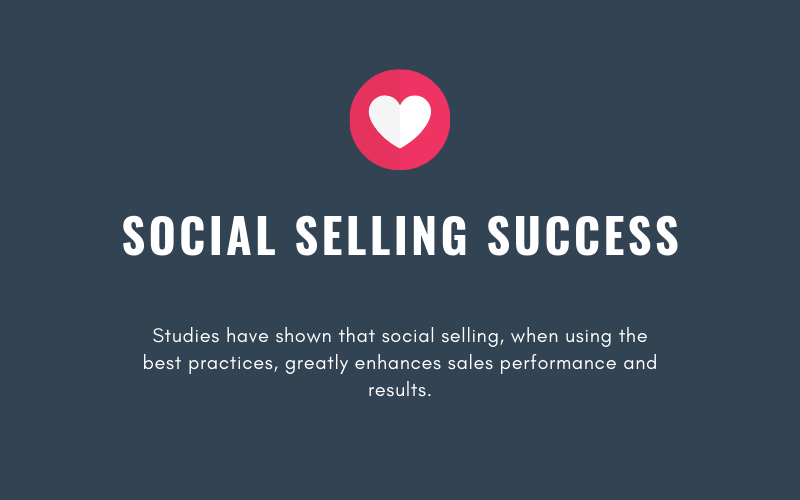
Studies have shown that social selling, when using the best practices, greatly enhances sales performance and results. For example, LinkedIn Research found that 78% of social sellers outsell those that don’t use social media in their sales role.
So, how do you become successful at social selling?
There are four (4) key steps to being successful in social selling:
- You must establish your professional brand. You need to establish yourself as a professional thought-leader or subject matter expert by publishing meaningful and insightful content.
- You need to find and connect with your ideal prospects whether they are your buyers or key influencers in the buying process. Harvard Business Review found the number of people involved in a B2B purchase today is 6.8. Therefore, you need to identify and connect with as many of them as you can in less time using efficient search and research tools.
- You need to engage with your connections with insightful content. You need to create and share content that is conversation-worthy in order to spark and grow relationships.
- You need to build strong relationships by establishing trust with key decision-makers and influencers. One of the most annoying practices in LinkedIn is for someone to send a connection request and then immediately pitch their product once they are connected. Don’t do this! You must establish trust first by using insightful content to help those you are connecting with.
Help First
Establish trust and credibility. Build your relationship. If you have done the first 3 steps above effectively, your buyers will ask for help.
Benefits of Effective Social Selling
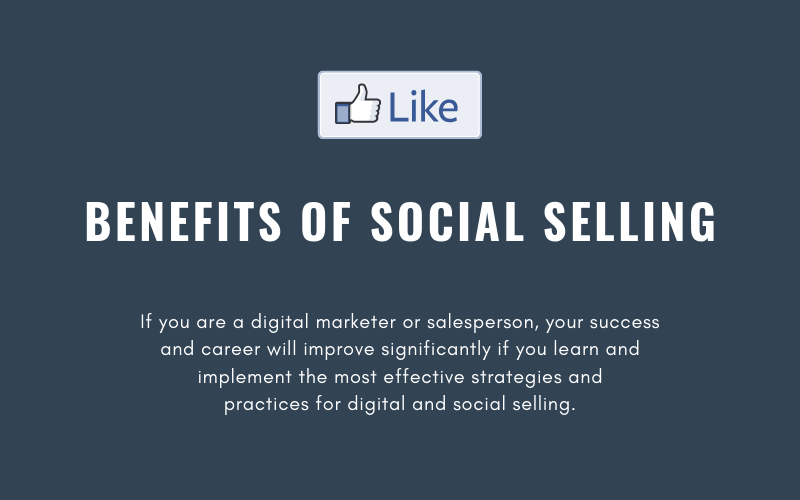
- Social selling leaders have 45 percent more opportunities per quarter than social selling laggards. (LinkedIn)
- Social selling leaders are 51 percent more likely to hit quota than social selling laggards. (LinkedIn)
- 65 percent of salespeople who use social selling fill their pipeline, compared to 47 percent of salespeople who do not. (HubSpot)
- Using social selling tools can increase win rates by 5 percent and deal size 35 percent. (HubSpot)
- 50 percent of revenue is influenced by social selling in 14 common industries, including software, healthcare, marketing, and advertising. (HubSpot)
If you are a digital marketer or salesperson, your success and career will improve significantly if you learn and implement the most effective strategies and practices for digital and social selling.
Much has changed even in the last 12 -18 months on the most effective digital and social selling practices.
Xcellimark offers personalized social selling training in combination with HubSpot CRM technology training to help you learn not only how to do social selling, but also how to use the technology platform you need for the best results.